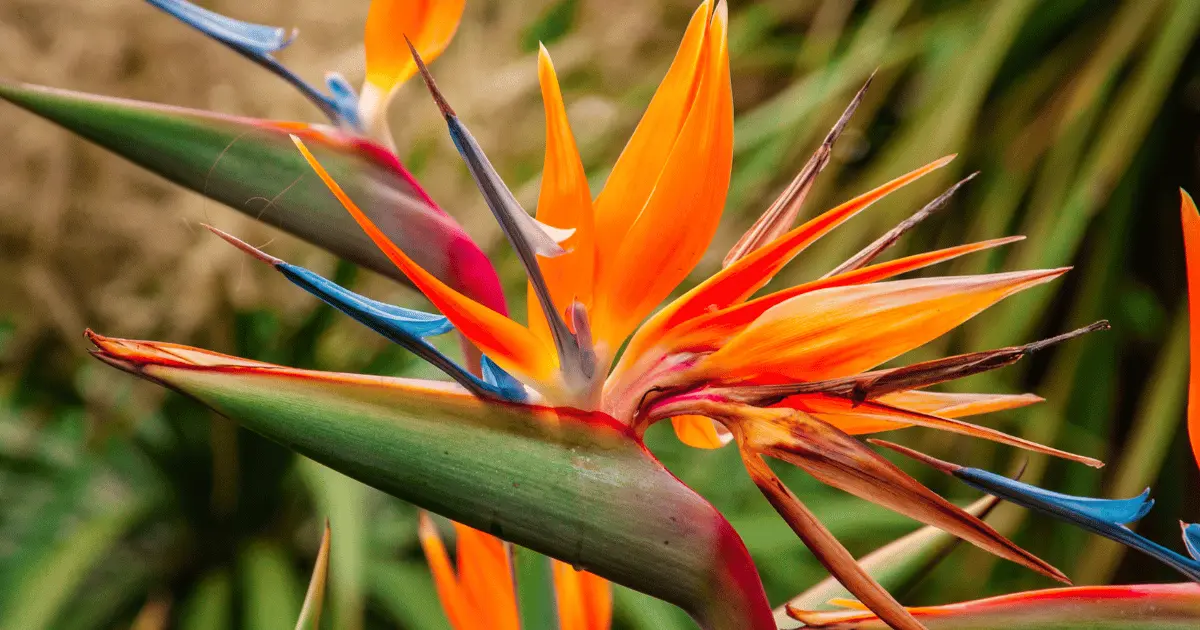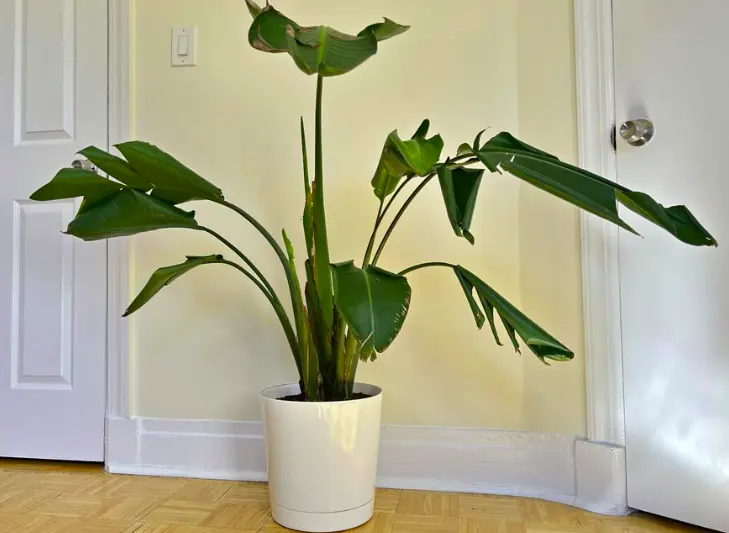Bird of Paradise is a close family of tough, resilient, adaptive, and tender garden plants well praised for their resistance to long droughts and popularly propagated as decorative plants for high-class weddings and other social events.
They’re also called Crane Flower, tracing their history to South Africa; Strelitzia varieties comprise five significant continuing garden plants with unique white and blue blooms and a typical height of 3.0-3.5 feet, with the S. Nicolai hitting above 10 meters (33 feet).
The magnificence of their leaves is quite striking: they bear healthy upright, hollow, furrowed oval foliage with elongated petioles. Their leaves usually appear bluish-green with a reddish mid-lining.
Propagating Bird of Paradise

Propagating crane flowers is not complicated, even if you’re just getting introduced to them. They demonstrate a great sense of adaptation to whatever inconveniences they face, which makes them hardly compromised by pests and diseases.
Strelitzia plants are naturally propagated by Sunbirds which serve as pollinators, and this places a limit on their replication where sunbirds are scarce because insects do not pollinate them. The good news is this can also be done manually by anyone, and there are other ways that they can be propagated.
The most popular ways to propagate Bird of Paradise is by division of a mature plant or by seed germination. Let’s make a closer analysis of division method briefly.
Propagating Bird of Paradise by Plant Division
If you wish to grow new Crane flowers faster and not worry about the size of your pots, then dividing a mature Bird of Paradise plant should do the trick. You could opt for stem (sometimes called beheading) or root division.
Dividing a Crane Flower Plant from the Stem
A great secret to achieving success in your propagation is choosing the right time to do it. Bird of Paradise are best propagated in their active growing season, which falls between late spring and early summer (usually April to late July).
Remember to water the new pots more frequently in the first three months after planting, and as you water, ensure the pots have good drainage to tap out the excess water immediately. Pots with holes bored at the sides and bottom have better draining capacity than normal sitting ones.
- While preparing for the division, select the plants that have bloomed once or twice before; any plant younger than three years isn’t ideal for good results.
- If your plant looks leggy, the adventurous roots, called suckers, can propagate into new plants.
- Remove the plant from its pot and separate the rhizomes and suckers growing on the roots using your fingers or scissors. Each cutting should have at least a leaf fan on it for propagation.
There are two ways to transplant the divisions: directly into the same pot you cut them from, in the same soil depth; or into a new pot to grow as individual plants. I prefer the latter because that’s the whole essence of the division in the first place.
Once you’ve planted the divisions in separate pots, water thoroughly and ensure the excess water drains off. Now place the pots on a warm surface where they’ll get adequate sunshine.
You can expose them to 1 or 2 hours of direct sunshine after the first three months of propagation but don’t expect their mesmerizing flowers to bloom until after three years of low-cost care and maintenance.
It’s quite surprising how they can’t grow via stem or leaf cuttings, only by propagating root rhizomes through division.
I tried to grow their stem cuttings in the water and a potting medium, and it just sat there for weeks; I had to accept the popular opinion. For unknown reasons, Bird of Paradise plants only grows vegetatively from root cuttings.
Watering your Bird of Paradise Pots
Crane Flower loves to be propagated in a warm, humid environment with a lot of shaded sunshine penetration. It’s necessary, however, to avoid getting the soil potted overwatered until it gets soaked.
They enjoy a lot of misting to maintain the dampness of the leaves, but you should regulate how damp they get to avoid leaf rots. Deep bottom watering is recommended when they mature, and you should wait to water them until the top 1-2 inches of the soil surface becomes dry.
Sunlight Requirements of Bird of Paradise
It’s imperative to keep them away from direct sunshine in their early growth stages. In comparison, they may tolerate the burning effects of summer sunshine for an hour or two, too much if it can lead to the browning of leaves, a symptom of sunburns.
A common indication of deficiency in sunlight, however, is the yellowing of leaves. Whenever their leaves begin to turn yellowish, it indicates that they need to receive more sunshine daily to grow properly. It would help if you changed the position of their pots to a better-illuminated spot.
Best Potting Medium to Propagate Bird of Paradise

The Crane flower plants are seemingly quick growers that can add up to 3 feet to their heights annually. Their roots are also excellent invaders that easily crowd the pot, so you should begin making arrangements for a pot with wider inner dimensions to relocate them once grown in their nurseries.
They can be propagated successfully in a potting soil mix with the right nutrients and porousness. They’ll bloom in their seasons with the right soil mix, filling your home or garden with their enchanting elegant beauty for 3-4 weeks.
When considering the right soil mix for them, note that their roots always want to breathe fresh oxygen and stay with as little moisture as possible; keeping them sitting in damp soil for long will result in root rots, and the same goes for the leaves.
A simple potting mix formula for making your homemade lightweight soil mix will comprise 50% garden soil blended with 50% coconut coir or peat moss. My little secret to improving the porousness and giving the soil mix good drainage is adding a handful of perlite.
I learned, over the years, that using a commercial cactus potting mix or succulents soil mix to grow Bird of Paradise results in observable slower growth rates, but this can be corrected by mixing 1/2 cactus mix with 1/2 peat moss. Maintaining good drainage and aeration in your soil mix is important for excellent results.
Toxicity of Bird of Paradise Plants
Beauty could be deceptive as these elegant blooming flowers can also demonstrate varying levels of mild toxicity when their essence or foliage is consumed. Prolonged direct physical contact could also provoke mild irritations to the skin.
Their toxicity is traceable to the hydrocyanins and tannins present in them. Symptoms of concern from consuming their parts include vomiting, diarrhea, and other intestinal disturbances; the more severe biological responses could trigger choking; in which case, an emergency medical intervention will be required.
Wrapping Up…
The name comes from the inflorescence of three blue and three orange leaflets, which bud during their growing season to propel the image of a soaring bird caught in flight.
Bird of Paradise is an interesting, long-living, highly attractive garden plant, and you’ll never get bored having them in your sight for a long time. Their exquisite plumage and attractive blooms make them well-desired at high-class social events.
They’re quite easy to propagate and less demanding to maintain. A well-cared-for garden of Crane flowers can be passed from one generation to the next because they usually outlive their original propagators, blooming and blossoming for upwards of 100-150 years.
